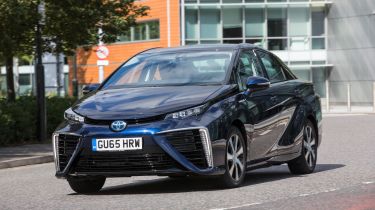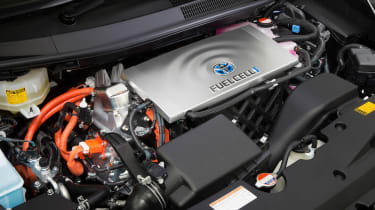Toyota Mirai saloon - Engines, drive & performance (2015-2020)
Driven by an electric motor, the Toyota Mirai accelerates swiftly and is generally good to drive
Although it’s radically different under the metal to almost anything else on the road, the Toyota Mirai is not that unusual to drive. As the electricity it generates using hydrogen and oxygen is fed to an electric motor, the Mirai behaves in a similar fashion to fully electric cars like the Nissan Leaf and Tesla Model S. A single-speed transmission means there are no gearchanges to worry about, either.
The electric motors are very quiet on the move, too, with only a faint mechanical whine audible under acceleration. But this doesn’t mean you have to put up with road and wind noise when on the move instead, as Toyota has fitted plenty of sound-deadening and other insulation to the car to keep things civilised at speed. All this means the Mirai is a smooth, quiet and relaxing car to drive on any type of road - it rides very well on UK roads, plus it's smooth over potholes and bumps.
Like most hybrids and EVs, the Mirai has a power button that boosts performance temporarily (but also reduces range somewhat). The brakes feature power-regeneration technology similar to that used by the Toyota Prius and other hybrids, which further boosts the car’s efficiency.
On the move, the Mirai’s supple suspension and direct steering make it fun to drive, as well as nicely comfortable for both driver and passengers. With the hydrogen fuel cells mounted low down in the car, it has a low centre of gravity, which improves its handling even more.
Toyota Mirai hydrogen engine
The Toyota Mirai’s electric motor means you get the same instant surge of power when you put your foot down that you get from other EVs. A total power output of 152bhp puts the Mirai’s drivetrain on par with an average 2.0-litre diesel engine. It’s enough to accelerate the futuristic-looking car from 0-62mph in a claimed 9.6 seconds and on to a top speed of 111mph.













